Nation's decadeslong journey of celestial exploration continues to break new ground
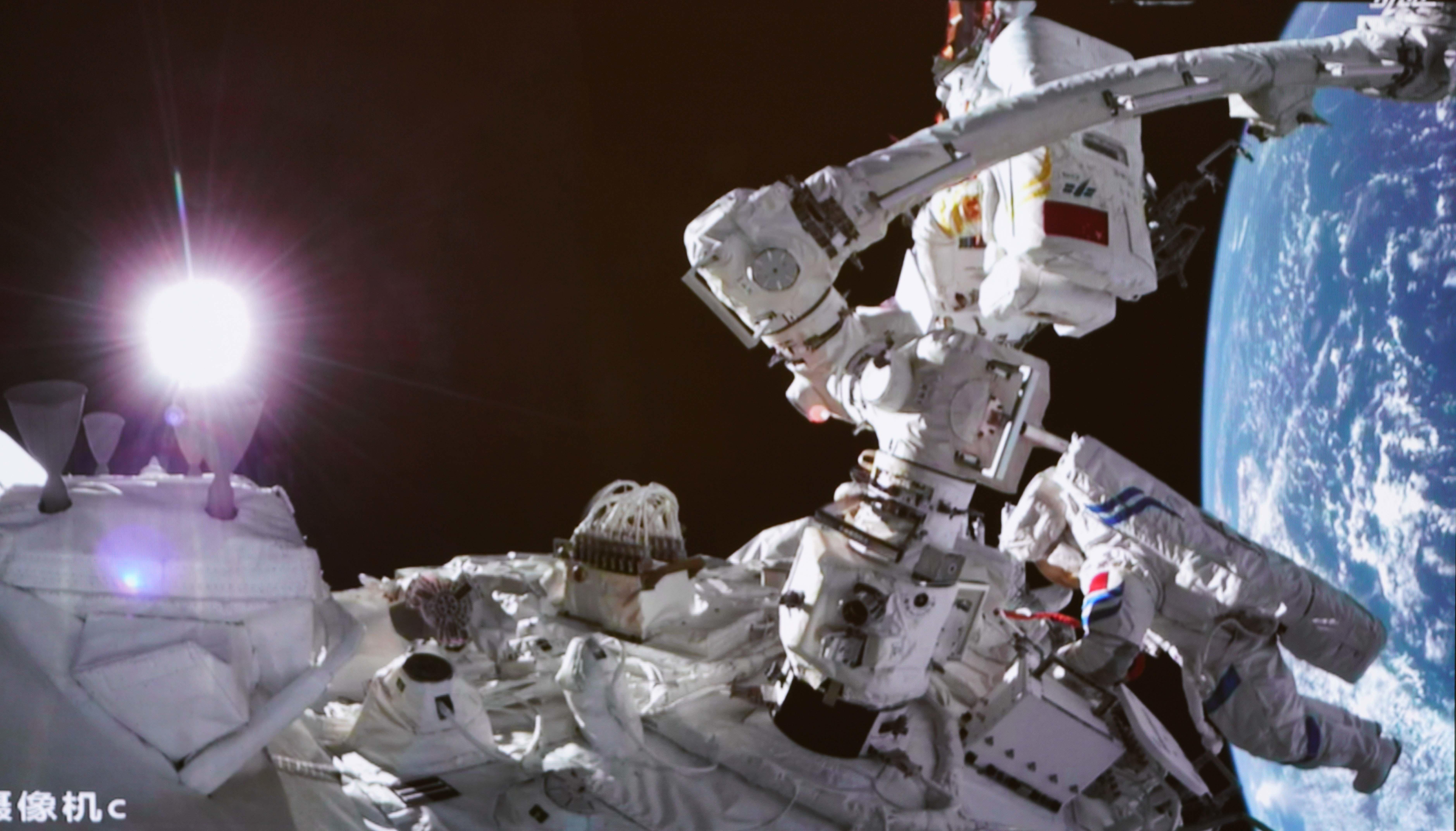 Screen image captured at Beijing Aerospace Control Center on Sept 17, shows Shenzhou XIV astronauts Cai Xuzhe (top) and Chen Dong conducting extravehicular activities. (PHOTO / XINHUA)
Screen image captured at Beijing Aerospace Control Center on Sept 17, shows Shenzhou XIV astronauts Cai Xuzhe (top) and Chen Dong conducting extravehicular activities. (PHOTO / XINHUA)
Editor's Note: The year 2023 marks the 30th anniversary of the founding of China National Space Administration and China is now one of the great space powers in today's world. In celebration of the eighth national Space Day on Monday, China Daily presents a four-page special report on the nation's achievements in the field.
The first spacecraft to visit China's Tiangong space station this year — the Tianzhou 6 robotic cargo ship — is scheduled to launch in early May to transport materials for the next manned mission.
Tianzhou 6 is tasked to deliver propellants, science payloads and necessities for the astronauts, according to mission plans previously published.
Before its arrival, the Tianzhou 5 will depart the station to leave the docking hatch open for Tianzhou 6 and then burn itself up during its descent toward Earth.
 A photo of Earth is taken from China's Tiangong Space Station by Liu Yang, a crew member of the Shenzhou XIV mission, on Oct 20. (PHOTO PROVIDED TO CHINA DAILY)
A photo of Earth is taken from China's Tiangong Space Station by Liu Yang, a crew member of the Shenzhou XIV mission, on Oct 20. (PHOTO PROVIDED TO CHINA DAILY)
Pang Zhihao, an expert on space exploration, said that compared with its predecessors, the Tianzhou 6 will carry more equipment and materials for scientific experiments and technological demonstrations.
"The Tiangong space station began formal operations at the start of this year so astronauts are spending more time on science and technology tasks. Now a large proportion of their time will be used to install and fine-tune scientific and technological apparatuses, and carry out experiments and tests," he said.
"As the bioregenerative life-support system inside Tiangong has been fully tested and proved functional, Tianzhou ships will no longer need to carry many living necessities and the space and weight saved can be used to transport more mission payloads."
The Long March 7 carrier rocket tasked with lifting the cargo spaceship has recently been transported to the Wenchang Space Launch Center in Hainan province, according to China Manned Space Agency.
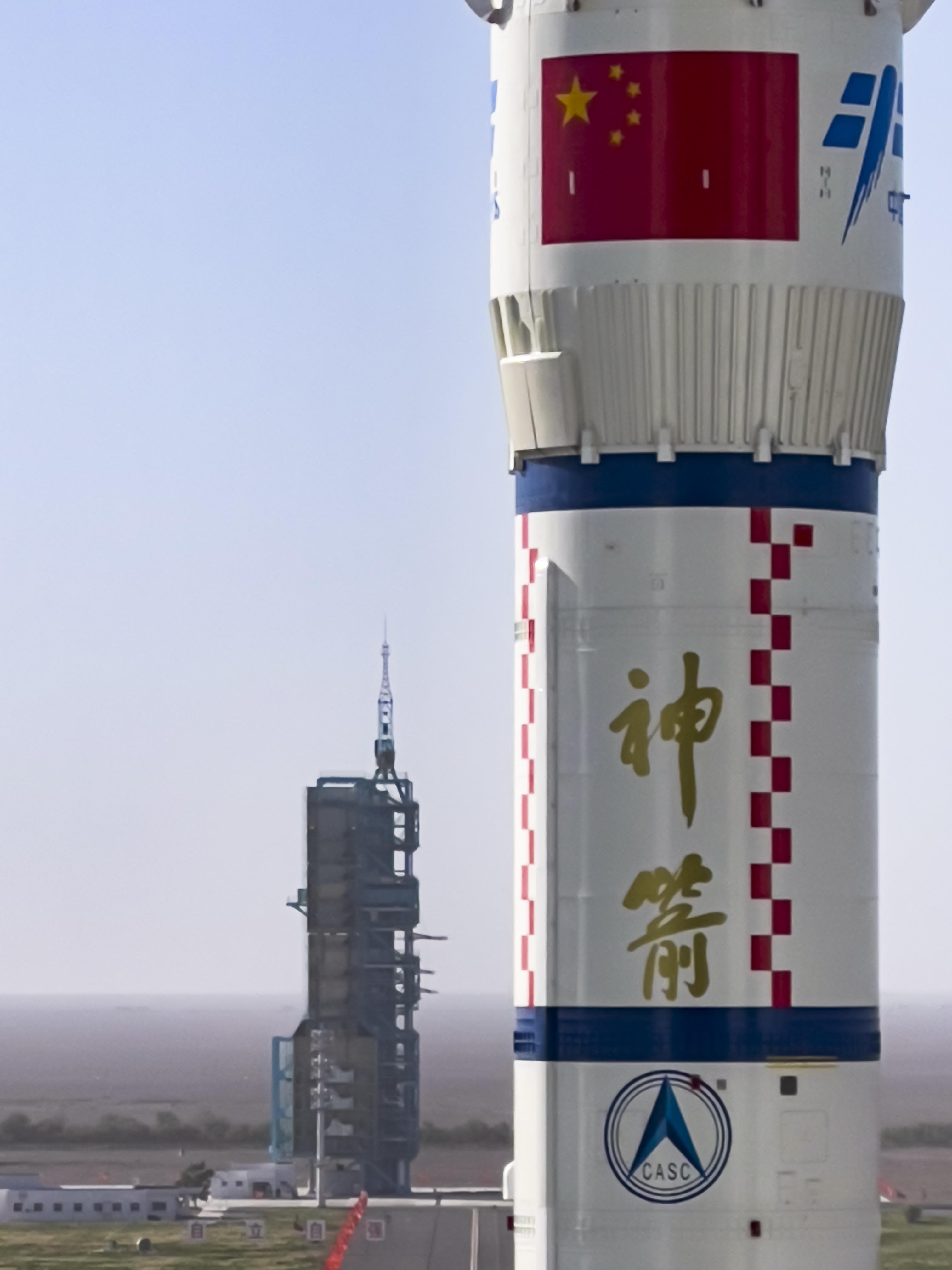 The Long March 2F and Shenzhou XIV spaceship are transferred to the launch pad in Jiuquan Satellite Launch Center in northwestern China's Gobi Desert on May 29. (PHOTO PROVIDED TO CHINA DAILY)
The Long March 2F and Shenzhou XIV spaceship are transferred to the launch pad in Jiuquan Satellite Launch Center in northwestern China's Gobi Desert on May 29. (PHOTO PROVIDED TO CHINA DAILY)
The rocket is undergoing pre-launch checks with the cargo ship, the agency said.
Tiangong's current inhabitants — the three members of the Shenzhou XV mission — arrived at the station on Nov 30 to join the three Shenzhou XIV astronauts.
The two crews' meeting marked the first time six Chinese people had traveled into outer space at the same time and also the first in-orbit handover between two Chinese crews. They lived together for more than four days before the Shenzhou XIV crew flew back to Earth.
By now, the Shenzhou XV astronauts — mission commander Major General Fei Junlong, Senior Colonel Deng Qingming and Senior Colonel Zhang Lu — have conducted four spacewalks, surpassing previous crews.
During their spacewalks, Fei's team has mounted equipment required for extravehicular scientific experiments and technological demonstrations.
Their six-month journey is scheduled to conclude around the end of May, and the Shenzhou XVI crew will take over.
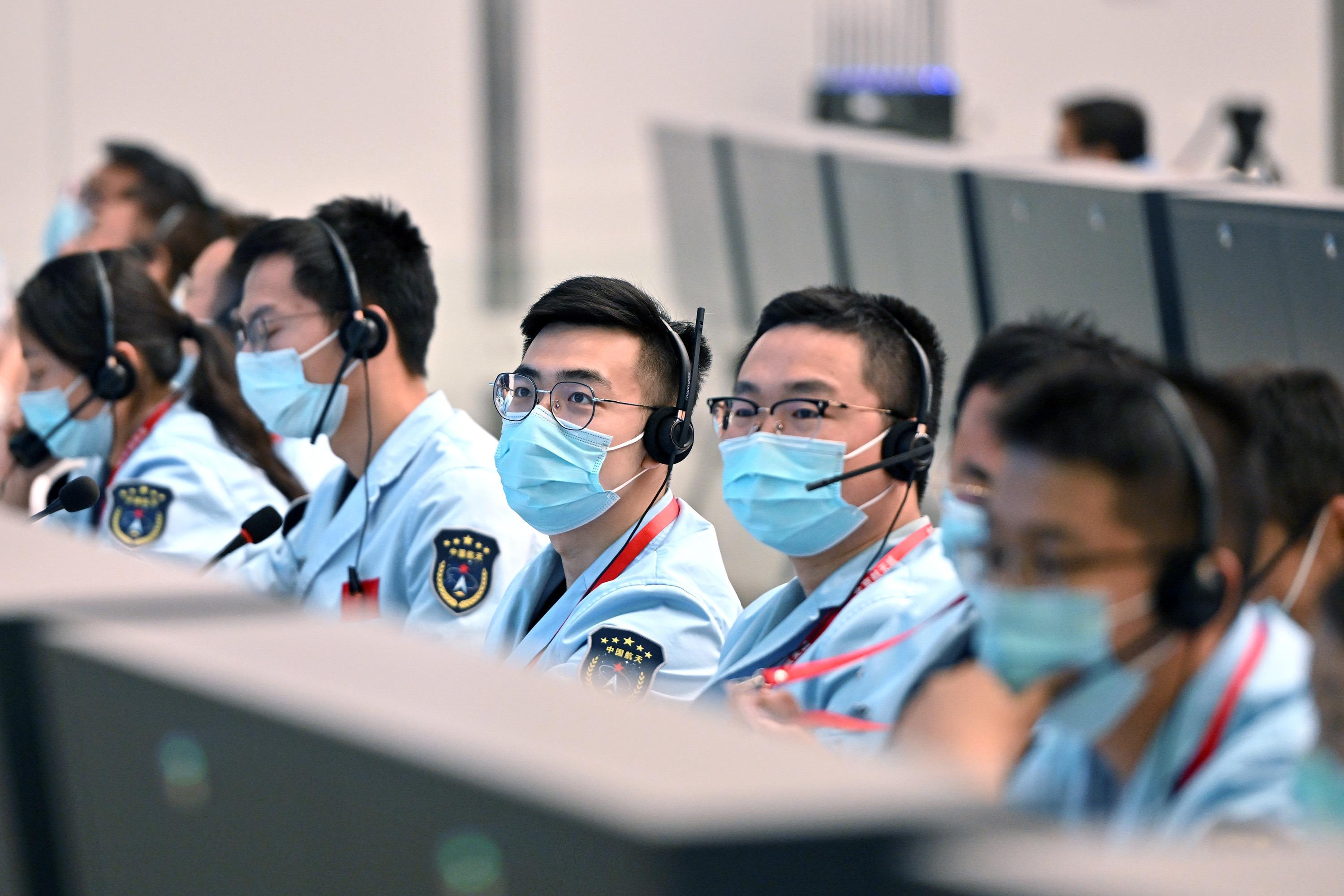 The control team monitors the automated rendezvous and docking of the Shenzhou XIV spaceship with Tiangong Space Station at Beijing Aerospace Control Center. (PHOTO / XINHUA)
The control team monitors the automated rendezvous and docking of the Shenzhou XIV spaceship with Tiangong Space Station at Beijing Aerospace Control Center. (PHOTO / XINHUA)
Decadeslong pursuit
The origin of China's aspirations to operate its own space station can be traced back to the mid-1980s when a group of distinguished space scientists started calling for government support to open manned space programs so that China would not lag behind in the global arena of space exploration.
In November 1986, the government launched what later became known as Project 863.The national high-tech project covered seven major fields, ranging from biology to new energy. It set two major goals for China's space sector: one was to build large carrier rockets and reusable aerospace vehicles; the other was to construct a space station.
In August 1992, a special committee formed by high-ranking leaders decided that China will use manned spacecraft to assemble a space station in orbit in the coming decades. The plan was approved in September that year by the Standing Committee of the Political Bureau of the Communist Party of China Central Committee, officially debuting the nation's manned space program.
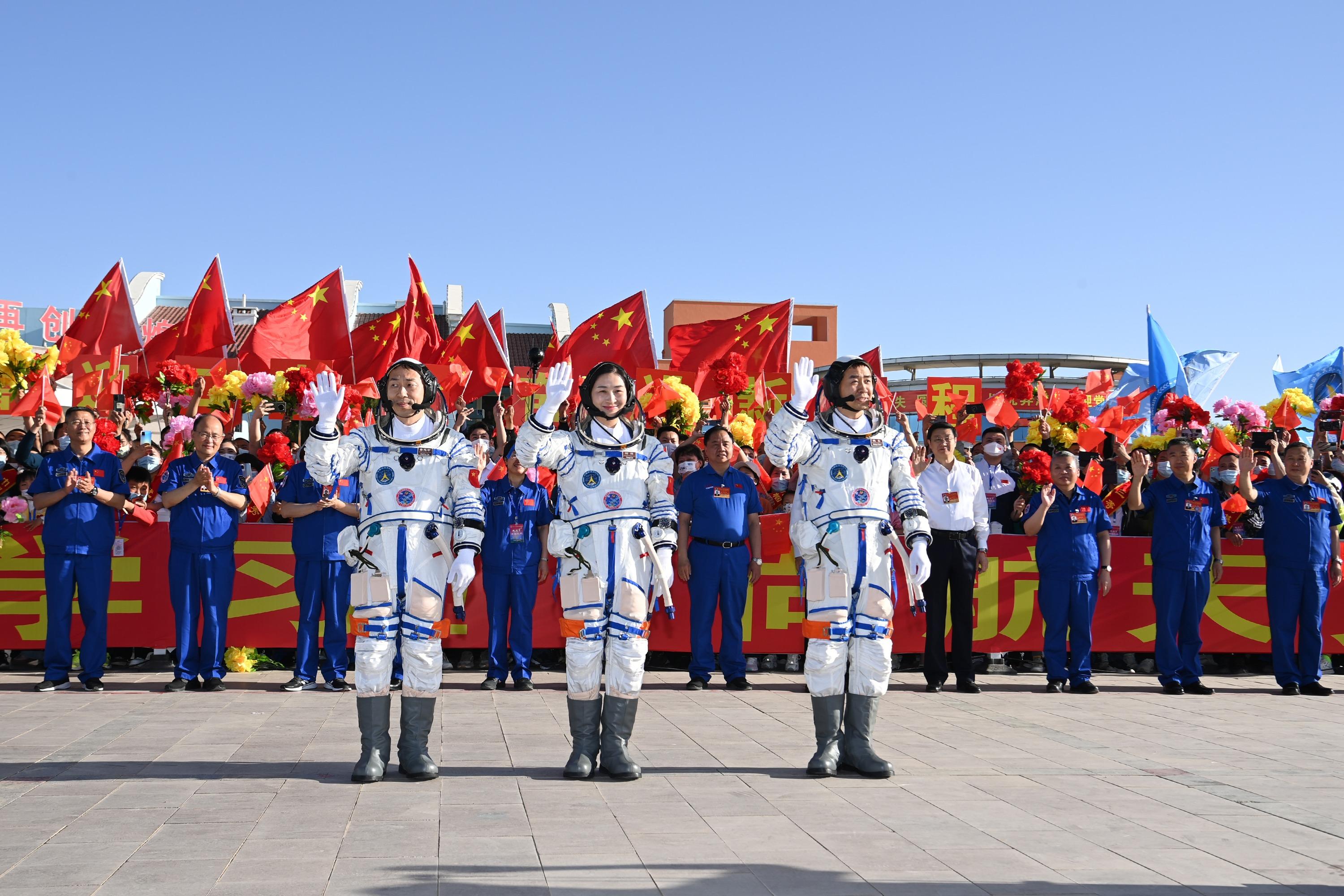 Chen Dong (right), Liu Yang (center), Cai Xuzhe, astronauts of the Shenzhou XIV mission wave to the crowds at the Jiuquan Satellite Launch Center on June 5. (WANG JIANGBO / FOR CHINA DAILY)
Chen Dong (right), Liu Yang (center), Cai Xuzhe, astronauts of the Shenzhou XIV mission wave to the crowds at the Jiuquan Satellite Launch Center on June 5. (WANG JIANGBO / FOR CHINA DAILY)
To achieve the ambitious goal, the country made specific plans and took a systematic approach, advancing patiently from simple, multi-day missions to sophisticated, monthlong flights involving several spacecraft.
After nearly 30 years of preparations, China launched the first, and central, component of its space station, the Tianhe core module, in April 2021, and began to send astronauts to fly with it to prepare for the arrival of other parts.
In the second half of last year, the Wentian and Mengtian science modules were launched to dock with Tiangong, completing the space station's construction phase.
Orbiting Earth about 400 kilometers above the ground, Tiangong now weighs nearly 100 metric tons and is expected to operate for at least 10 years as a national space-based laboratory.
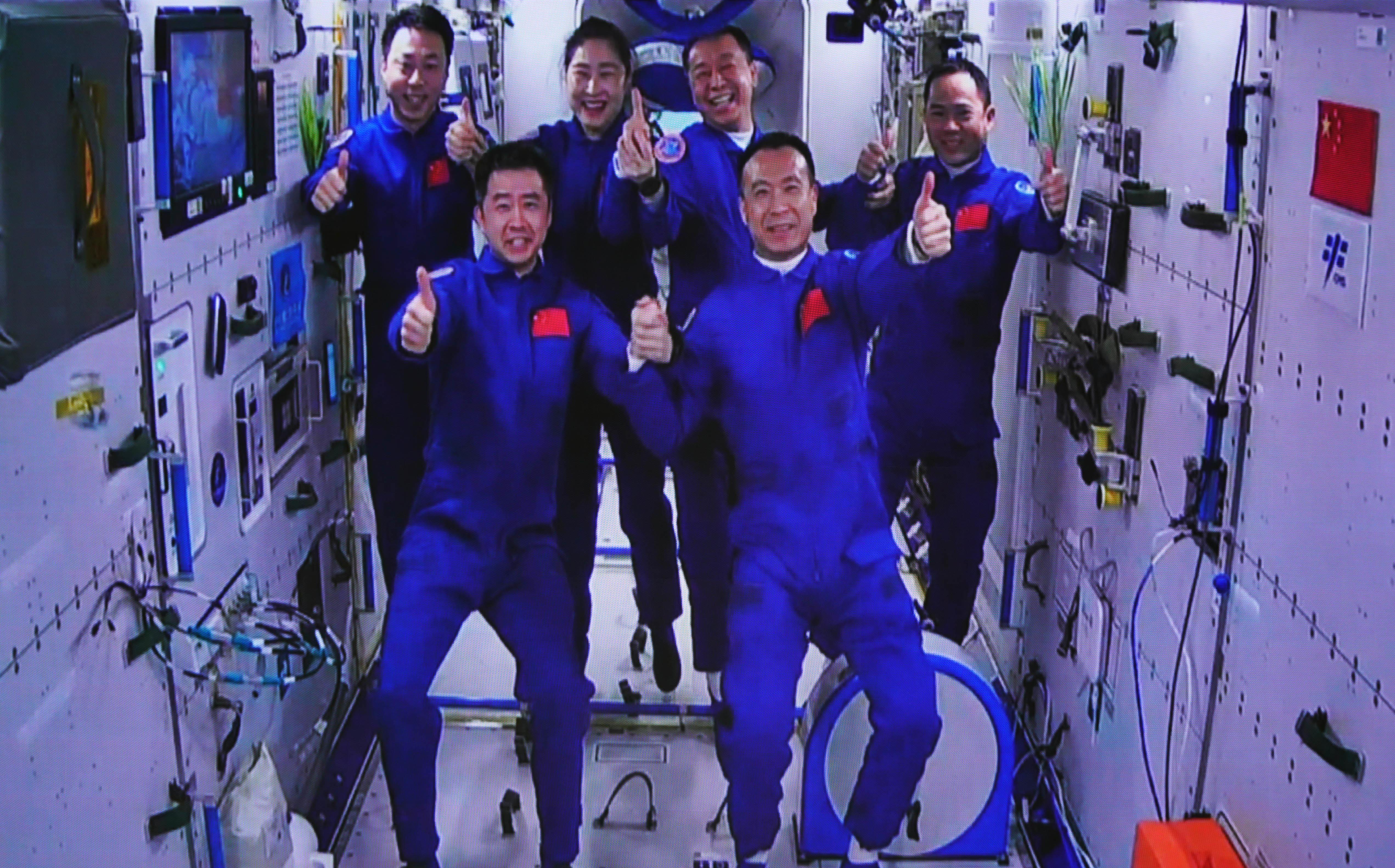 Two crews from the Shenzhou XIV and XV missions meet on Tiangong Space Station on Nov 30. (PHOTO / XINHUA)
Two crews from the Shenzhou XIV and XV missions meet on Tiangong Space Station on Nov 30. (PHOTO / XINHUA)
Scientific platform
The station's first science section, Wentian contains eight scientific cabinets. They are mainly used to serve biological and life science studies, and can also support research on the growth, aging and genetic traits of plants, animals and microbes in the space environment.
The exterior of the module has 22 extravehicular payload adapters capable of carrying out scientific experiments that require exposure to cosmic rays, vacuums and solar winds.
Wentian also serves as a backup control station to the Tianhe core module in case of emergencies or malfunctions. It has all the same flight-control devices as those inside the core module to operate the entire Tiangong station.
 A Long March 5B rocket launches on its inaugural flight on May 5, 2020. (PHOTO / XINHUA)
A Long March 5B rocket launches on its inaugural flight on May 5, 2020. (PHOTO / XINHUA)
The second lab module, Mengtian, is the world's largest single-body spacecraft now in active service. It contains 13 scientific cabinets used for microgravity studies and experiments in fluid physics, materials science, combustion science and fundamental physics. It also carries 37 extravehicular payload adapters.
A major technical feature of Mengtian is that it can move scientific apparatus out of the Tiangong station without requiring any manual labor by the astronauts to conduct extravehicular experiments and bring them back again.
The lab module is capable of launching miniature spacecraft, such as CubeSats.


